ÚVAHA: Center and periphery of the body designed by science fiction 1/3
Článek od: Anonym - 20.11.2010
 A science fiction tale is more often than not a thought experiment. In any tale we are most intrigued by ourselves and not so much by the mysteries of nature and power of the technology. The narrative horizon of human body belongs to the fundamental issues of human thinking.1 In this presentation I’ll concentrate on the body though the mind can not be separated from it, as well as the centers and peripheries of the body and mind are not separated entities but rather complementary perspectives of the same unity. Nevertheless, a blend potential is different from any of the ingredients alone.
A science fiction tale is more often than not a thought experiment. In any tale we are most intrigued by ourselves and not so much by the mysteries of nature and power of the technology. The narrative horizon of human body belongs to the fundamental issues of human thinking.1 In this presentation I’ll concentrate on the body though the mind can not be separated from it, as well as the centers and peripheries of the body and mind are not separated entities but rather complementary perspectives of the same unity. Nevertheless, a blend potential is different from any of the ingredients alone.
Bodies inhabit the space which is more than a container of things; it is modified by motion, speed and change. We do not perceive the “real”, of the observer independent space if any such exists. For us, the space is shaped by cultural paradigms, it is full of centers and peripheries, the old ones shifting or vanishing, the new ones arising and changing.
The potential and identity of the body/soul mixture is the underlying theme in the majority of all art and craft products. However, it is the surface design which first of all indicates qualities of the fictional person. That pertains also for animals, aliens, real persons etc. The scope of the theme is so enormous that here we will try barely to sketch the issue of human body design, not attempting the description and/or examination of other design categories in science fiction. A whole thematic universe left out here is the examination of many classes of transgressive beings, of the shapeshifting, morphing and other metamorphic processes.
As an independent topic could also be explored the question: “Design of what, not only of the material and shape, but design of a person and consequently of the mind in computer, of cyborg, of cowboys of virtual reality with their jack-ins, of mutants, of human hybrids with plants and aliens, etc.?” Exploration of “design for whom” is also of interest; is a cyborg or alien corporeal design different from human body?
One access into understanding of our culture are metamorphoses of human bodies. The ideals of the humanism emphasize the perfection of the human body, posthumanism demands its metamorphoses. Technopaganism and cybershamanism are searching for future in archaic rituals. Technomagical enchantments like „fusion of organism with machine“, „consciousness in cyberspace“, „escape into virtual reality“, „deconstruction of embodiment“ correspond with ancient visions on soul separated from body. By the way, what design may have the soul?
As Mary Shelly demonstrated in Frankenstein, the first great cyborg story, liberation neither of man nor of machine is inevitable. A modified subject does not inexorably know by what and whom is controlled his behavior; elites are using biotechnologies for their purpose. The “Others” in science fiction are constructed out of our past and future potential not more artificially as our today existent subjectivities. The proliferation of Others is the promise of monsters, the promise of possibilities.Why we spend huge amounts of money constructing artificial intelligence when the old production method of natural intelligence is free of cost and pleasant?
Fantastic societal universes are inhabited by real and imagined beings supposedly able of mutual interaction. Imagination is the mother of our post- and un-human selves just as the dice-rolls and manipulations of genetics parents determine our organic life form. The hazard has neither a center nor a periphery. Here lurks the potential for the escape to the future from human origins.
Physician Elliot Mantle in David Cronenberg’sfilm Dead Ringers (1988) attempts to wake awareness of our body interior incorrectly considered peripheral by our surface aesthetics, assuming the exterior as central. He demands „beauty standards not only for the body surface but also for the inner organs and psychical phenomena. The handsomest kidney, the best developed melancholy“, the aesthetics of the body interior with its own rules and taste. However, if we allow the body to define our targets, we will decline down to the level of a slug. If we will permit others to define targets for our body, we will decline below the level of an animal, down to the level of the speaking instrument which forsakes to decide about itself. It is not sufficient to know the limits of our body demarcating our targets; we must know what we want our body to become. Failure in achieving the goal is frequently less caused by technical obstacles and more by inability to define it reasonably (as for instance in case of intelligent but not reasonable species inhabiting planet Dichtonia (Stanisław Lem, 21st voyage of Ijon Tichy). Having achieved our objectives we also may discover that initially we had no intention to be so successful.
As long as the body was perceived a sacred design, fantasies on its re-designing were scarce. Contraposition of the unique design of man with his possible shapes is not a domain of science fiction any more. Science opened the Pandora box full of new designs of human being. Biotechnicians are reshaping the body to dummy, a thing without both center and periphery, to manipulated and controlled object.
We put our bodies into the realm of medicine, art and technoscience. So we have living cadavers of various sorts; donor clones going from single-dead to double-dead to triple-dead as their organs are harvested (prototypical horror version with human criminals invented Cordwainer Smith in Shayol).2 We have dead women re-constructed to reproductive apparatuses giving birth to technofetuses; there are neomorts in artificial comas and vegetative states, cryonauts awaiting resurrection in liquid nitrogen. There are transplant recipients, attached to a range of organs acquired as xenoplants from pigs and baboons; artificial organs can be constructed, technowizzards can deploy machine hearts, limbs and other prosthetics. To achieve the targets, the body must be rationalized. Taking a corpse, freezing it and slicing it thousands of times seems a horror story, but for technoscientist it is just another mapping of the body; searching for corporeal center and periphery has pragmatic purposes.
The concept of otherness conveys abundance of viewpoints on the representations of the relationship between centre and periphery. For instance, is an individual a basic element of the society or a peripheral phenomenon like an ant in the anthill? If the mind is a substance of man, is the body periphery? If body is a central source of the existence and functioning of the mind, can it be abandoned in favor of other vehicles, mechanistic like cyborg, hybrid chimeras shaped by biotechnology or bodiless fluctuations of electronic silhouettes circling eternally in some kind of virtual reality?
To be continued on next Sunday...
References and notes
- It encompasses topics like substance of human being, the problem of the Other and/or Otherness, metamorphoses of human body as seen already in the myths, Ovid’s Metamorphoses, shapeshifting medieval monsters and demons, Kafka’s transformation of man into an insect, in the early science fiction in Well’s Island of doctor Moreau or Stevenson’s Dr Jekyll and Mr Hyde up to cyborgs, mutants, clones, shapeshifters as The Thing, Terminator 1000, emulation of virtual reality with material objects and other themes and motifs.
- Smith, Cordwainer 1961: A Planet Named Shayol, Galaxy Science Fiction magazine October 1961.
(c) Ondrej Herec
- 4357x přečteno





















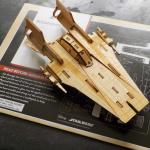
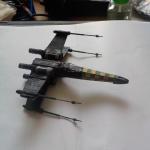
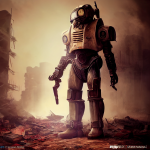

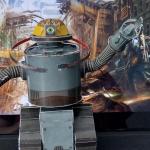
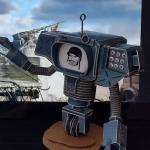
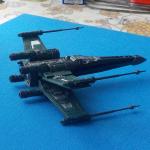
Přidat komentář